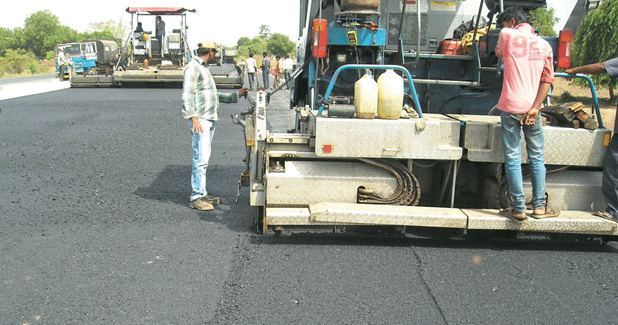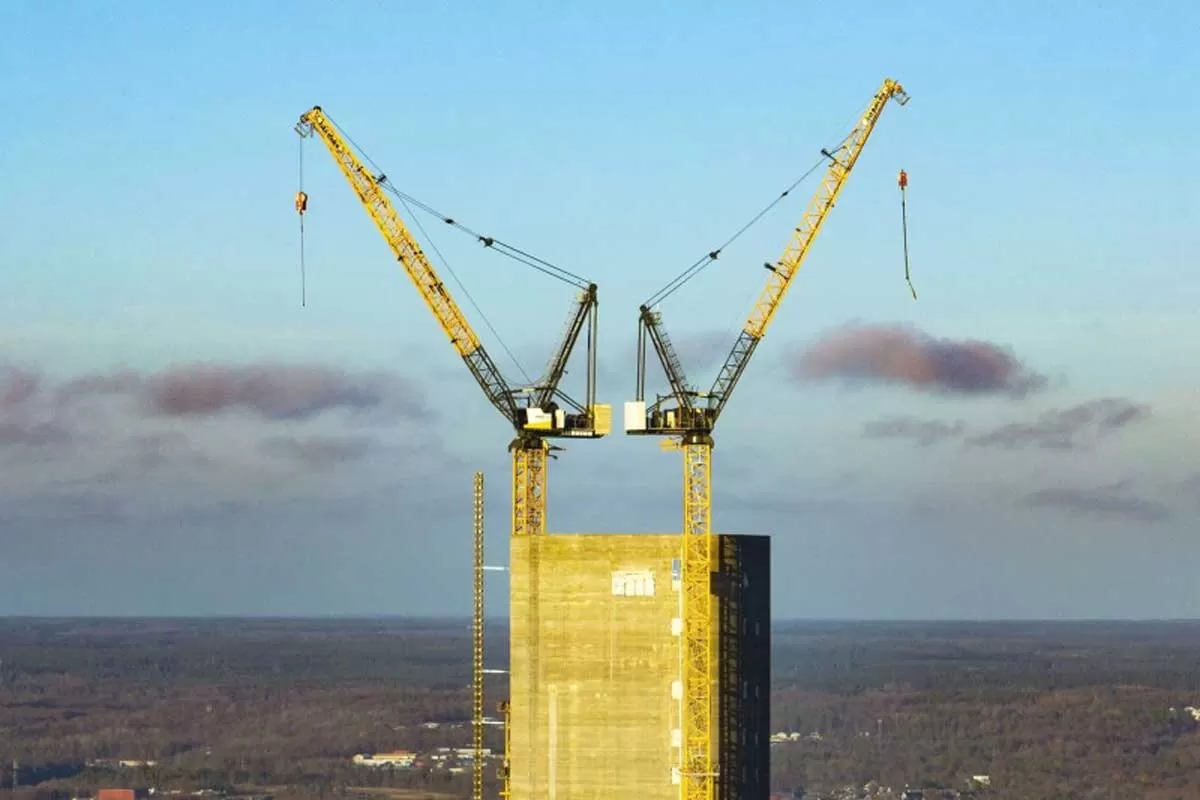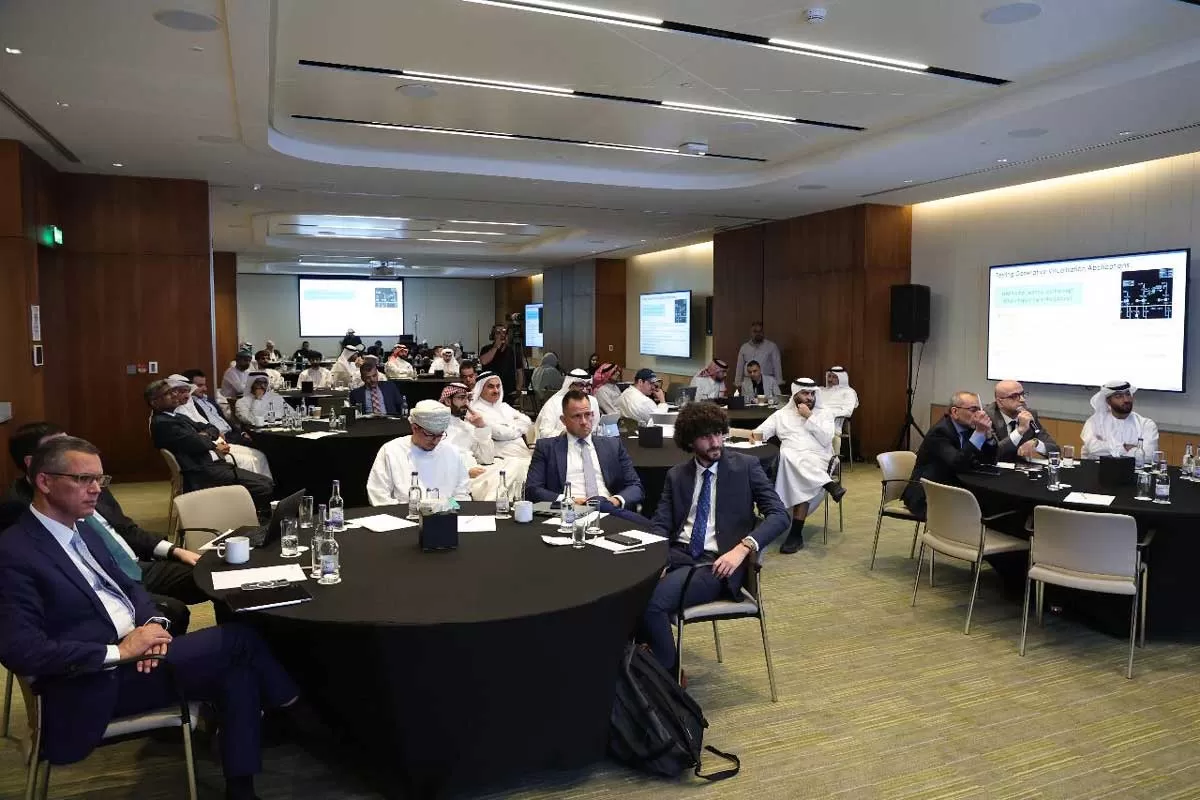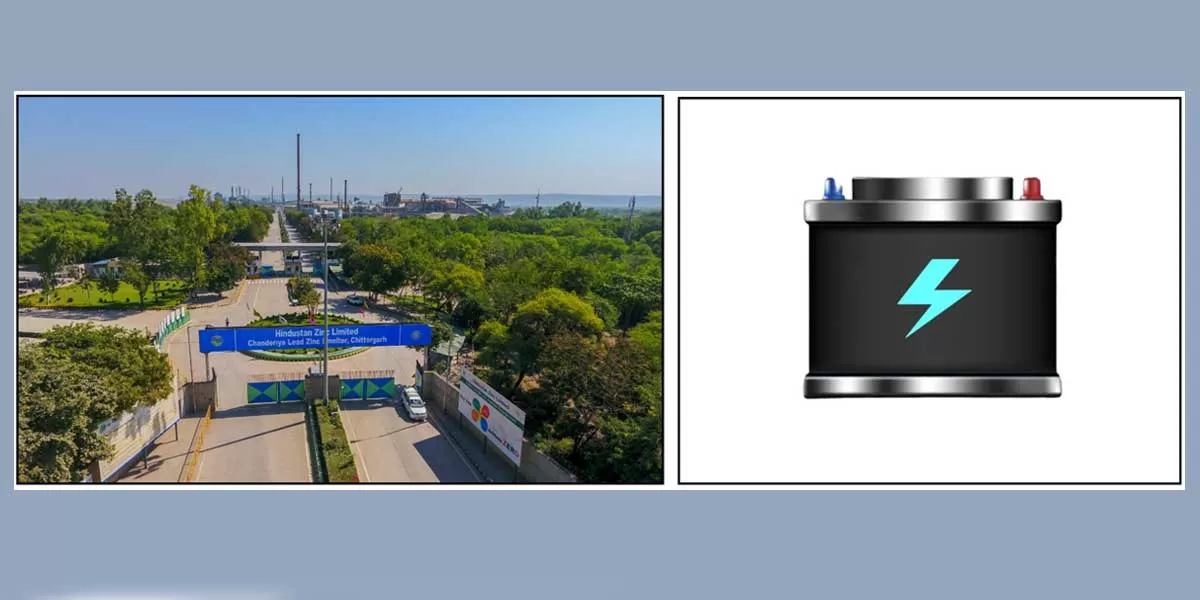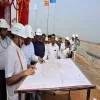It´s high time to eliminate the bumps in the path to adopting new road construction technologies, methods and machines.
Urban roads include municipal roads, railways roads, ports roads and military engineering service roads. India´s urban road network spans 411,324 km, according to Statistical Year Book India 2014.
However, only 291,432 km of this network is surfaced. States with the longest surfaced urban road network are West Bengal, Uttar Pradesh, Delhi, Gujarat, Karnataka, Maharashtra, Tamil Nadu, Odisha, Andhra Pradesh and Kerala. Together, these 10 states account for 80 per cent of the country´s surfaced urban roads. Maintaining the existing surfaced road network and surfacing over 100,000 km of un-surfaced urban roads are a huge task. These and other projects involving the construction of more urban roads bode well for players in the sector.´With 100 smart city projects entailing government expenditure of Rs 48,000 crore and other projects lined up, the demand for road construction equipment is sure to increase in coming years,´ affirms Amit Gossain, Executive Vice President-Sales, Marketing and Business Development, JCB India.
Pavement evaluation
A lot of pavement distress data is needed to evaluate the residual strength of existing urban pavements. Most of this can be collated through surveys carried out on the road section.
Volume count surveys show the volume of traffic in passenger car units per hour, pavement condition surveys provide pavement condition indices, Benkelman beam deflection surveys show the pavement´s deflection and bump integrator surveys get the roughness in millimetre per kilometre,´ explains Prashant Kapila, President & Chief Operating Officer, Intercontinental Consultants & Technocrats Pvt Ltd.´Surveys must be done at optimum intervals (see table on ´Length of Urban Roads´). We also take rutting measurements and collect temperature and rainfall data.´
Thereafter, ideally, a customised scheme of maintenance and rehabilitation strategy should be developed for each pavement section based on the analysis of such data. In India, the state of Odisha is moving towards this and so are Karnataka and Assam,´ observes Kapila.´Odisha has had a road asset management system developed for all state highways, major district roads and other district roads under the jurisdiction of the state Public Works Department (PWD). However, the system still does not take urban road sections under the jurisdiction of municipalities into its purview. Municipalities primarily maintain and rehabilitate roads on instant need basis without making any exercise of pavement evaluation. That possibly explains why so many municipalities across the country are plagued by bad roads.´
Technology fest
Various technologies are available in the market for the fast and effective repair of potholes. These include Road Block, a quick-acting cold (or hot) mix technology and Recycle Paper Mill Waste, a low-cost temporary solution.
´Also, one can use glass grid and bituminous paving mats in lieu of conventional bituminous macadam (BM) over severely cracked pavements before placing the flexible overlay,´ adds Kapila.
A positive is that many technologies are cost-neutral.´Zydex nanotechnology additives can bond the tack coat and bituminous layer such that resurfaces become moisture resistant and longer-lasting (two to three times longer) without adding to the cost because of savings generated in materials,´ explains Himanshu Agarwal, Vice President-International Markets, Zydex Industries.
While these developments are to be welcomed, road development authorities should promote the use of technologies proven to build longer lasting roads. Some such technologies can even cut down the use of conventional scarce road building material.
Zydex green road technology is suitable for new bituminous urban roads,´ shares Agarwal.´It starts with the stabilisation of in-situ soil and involves minimal use of aggregate.´
In Bengaluru, KK Plastic Waste Management Ltd has pioneered the use of plastic waste in road construction. Plastic waste is shredded and the bits are stored in bags for about a week to drain out the moisture from them. The waste is then taken to a hot mix plant to be blended with bitumen to produce polymerised bitumen. ´KK Poly Blend doubles the life of roads from an average of three to six years without increasing the cost of construction because the addition of plastic to bitumen in the ratio of 8:100 cuts the quantity of bitumen in the blend by 4 per cent,´ according to K Rasool Khan, Director, KK Plastic Waste Management Ltd.
So far 10,000 tonne of plastic waste has been blended in KK Poly Blend for the construction of 3,000 km of roads around Karnataka, mainly in Bengaluru city. Tremendous scope exists for the technology from the perspective of the environment as it completely reuses plastic waste without adversely impacting the process of recycling the road at the end of its lifecycle.
Recycling technologies
Recognising the need to introduce green technologies in the roads sector, recycled asphalt pavement (RAP) technologies have been considered in formulating the design guidelines of the flexible pavement (new construction) IRC:37 - 2012 standard. It is high time contractors adopt several recycling technologies, such as hot-mix plant recycling, hot-in-place recycling, cold-mix plant recycling, cold-in-place recycling and full depth reclamation. Hot-mix recycling involves combining RAP with new or ´virgin´ aggregates, new asphalt binder and recycling agent in a central hot-mix plant to produce a recycled mix. In the cold-mix recycling process, RAP, new aggregate, emulsified bitumen or foam bitumen without the need for heat are mixed in a centrally located cold-mix plant.
´In view of the increasing cost of bitumen, the scarcity of quality aggregates and the pressing need to preserve our environment, RAP technology incorporating emulsified bitumen and foam bitumen should be adopted in a bigger way,´ observes Kapila. Milling is another technology that needs greater adoption.´One of the major issues in urban road repair is that every resurfacing raises the level of the road,´ says Agarwal.´Urban road planners should adopt the international practice of milling the existing damaged bituminous layer and then resurfacing using a mix of virgin aggregate and the milled material. This maintains the level of the road.´
And according to Kapila,´Milling
the top damaged layer of the bituminous surface and replacing it with stone matrix asphalt (SMA) to strengthen the old pavement is one such example of latest pavement construction technology being introduced in India.´
Various machines for the milling of city roads are available. For example, Wirtgen offers cold-milling machines for the repair and correction of defects in the top surface of the road (Wirtgen Cold Milling W 100/W 100H) as well as machines for more extensive repairs to roads that are structurally deformed (Wirtgen Cold Recycler WR 240).´Cold in-situ recycling allows almost 100 per cent of the existing recycled material to be reused,´ explains Ramesh Palagiri, Managing Director & CEO, Wirtgen India Pvt Ltd.
Cold-milling is gradually becoming increasingly popular in a number of cities in India, like Chennai, Hyderabad, Pune, Gurgaon and Mumbai.´In Chennai, over 25 Wirtgen cold-milling machines are in operation,´ adds Palagiri.´Ashoka Buildcon, IRB Developers and L&T Infrastructure Ltd are all practising milling.´
Another recycling technology involves providing functional overlay in the form of slurry seal or micro-surfacing by adopting the process of in-situ hot recycling. According to Kapila,´Contractors like GR Infra, Era Infra, Ashoka Buildcon, IRB and L&T have used some recycling technologies but for short stretches of roads or experimentally.´
Optimum machines
Manoeuvre ability and speed are two critical features of machines used to construct and repair urban roads.´Machines compact enough to move in confined spaces and machines made for multifunctional applications are preferred,´ says Gossain. In this category, JCB offers the JCB skid steer loader, also called the JCB Robot, which along with its attachments is a versatile machine ideal for road repairing. The JCB 2DX backhoe loader, known as the ´small´ backhoe loader, has specifically been introduced for compact areas and is widely used for road applications. JCB also offers a comprehensive range of vibratory compactors.´VMT330, the latest addition in this portfolio, is compact, versatile, delivers high compaction forces and has high kerb clearance,´ adds Gossain.´We pitch it as ideal for road widening projects.´ Volvo offers a range of compaction machines, wheeled pavers and pneumatic tyre rollers manufactured in its Peenya facility located in Bengaluru to suit demanding urban road building and repair requirements.´In particular, the DD100 asphalt compactors have a built-in unique nine frequency and eight amplitude and are auto reversible eccentric, which help achieve the desired density in fewer passes,´ says Dimitrov Krishnan, Vice President, Volvo Construction Equipment India.´Smaller wheeled pavers with high-density screeds offer excellent manoeuvre ability for urban paving applications and can be shifted easily, which helps commission roads faster.´
Also on the anvil are machines for the quick repair of potholes, cracks and undulations.
Single vehicles equipped with infrared heater, hot box containing fresh pre-mix material and plate vibrator with the provision of heated asphalt and emulsion for rejuvenation, are handy and efficient,´ opines Kapila.
The patch-fill machine is a Central Road Research Institute innovation that quickly prepares cold-mix batches for immediate patching.
And Wirtgen offers the W35DC for the speedy repair of potholes. About 30-40 mm of the top surface is removed and an overlay is done during the night when traffic is light.´The best part is that even if the paving cannot be done immediately, the milled road can still be opened for vehicular movement,´ shares Palagiri.´About 50 such machines are operational across India.´
Now if only these machines could remove the bumps in the road, to ensure a smooth ride!
CHARU BAHRI
Quick Bytes
Statistical Year Book India 2014: Urban road network spans 411,324 km.
Only 291,432 km of urban roads are surfaced.
Municipalities maintain roads on need basis, not as per pavement evaluation.
What buyers look for: Productivity, fuel efficiency and low costs
Volvo Machines provide a distinct advantage in road construction simply because they deliver on two counts: high productivity and fuel efficiency. Add to that lower maintenance and operating costs over the long haul, and you get a distinct competitive edge for your business. Volvo has also chosen the right channel partners. We dealt with PACT Machines Pvt Ltd, one of their partners. They have the uncanny knack of providing critical service support at just the right time.´
